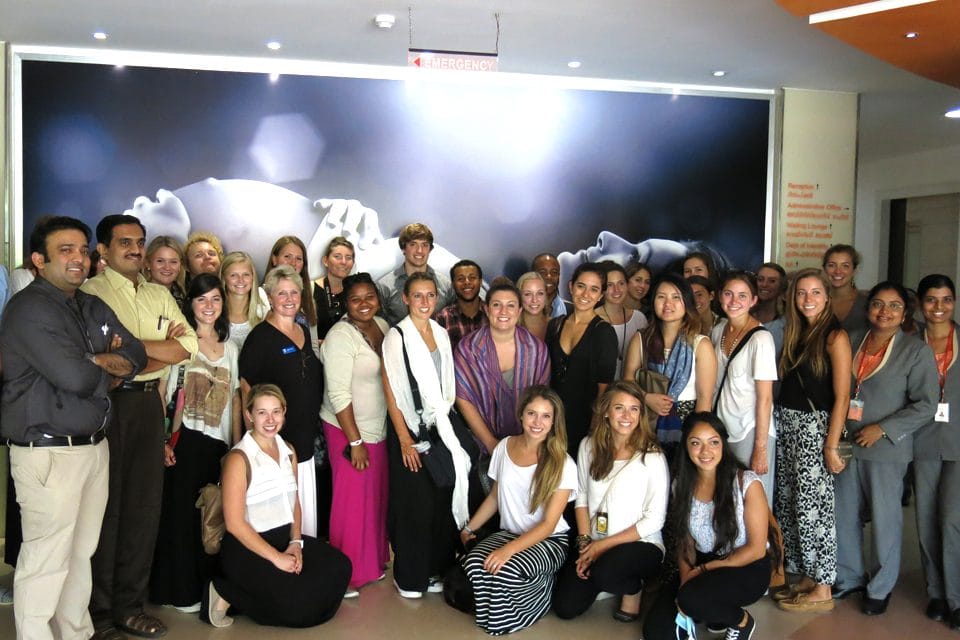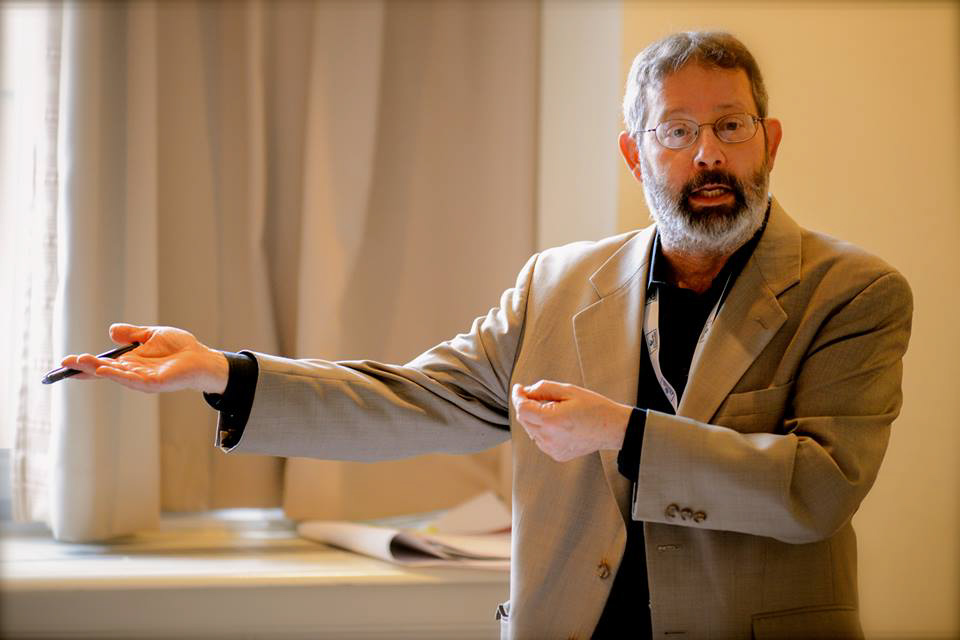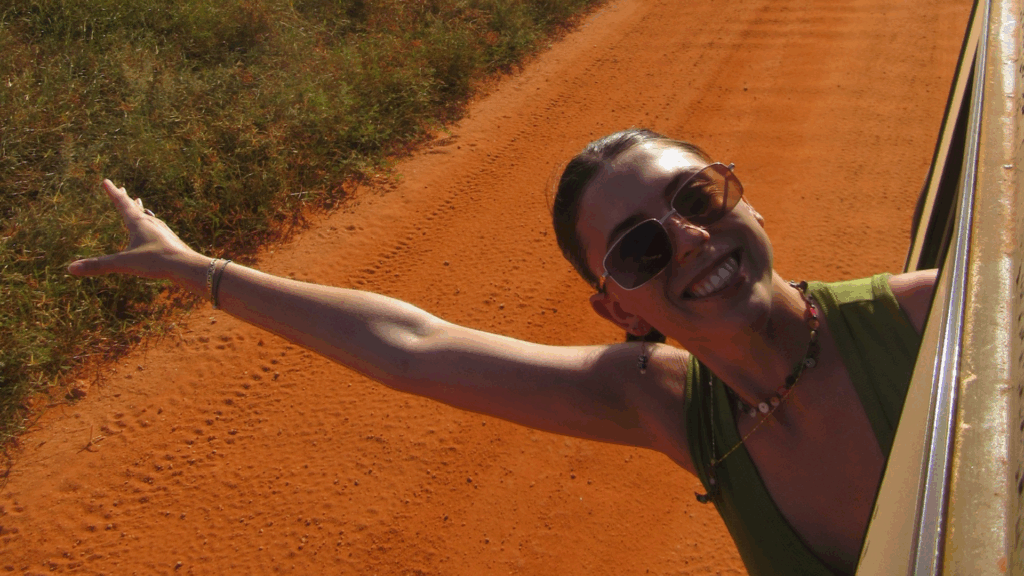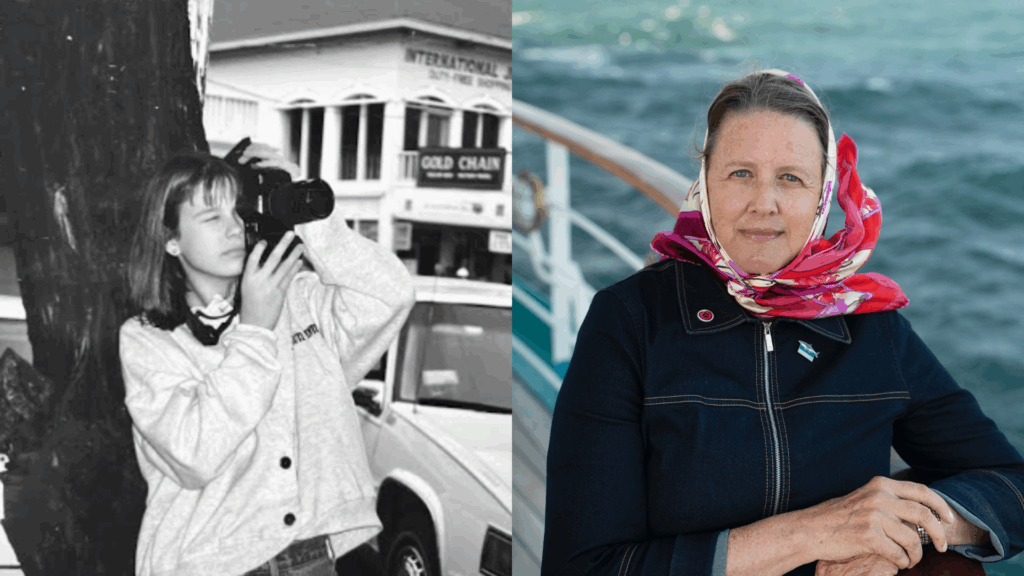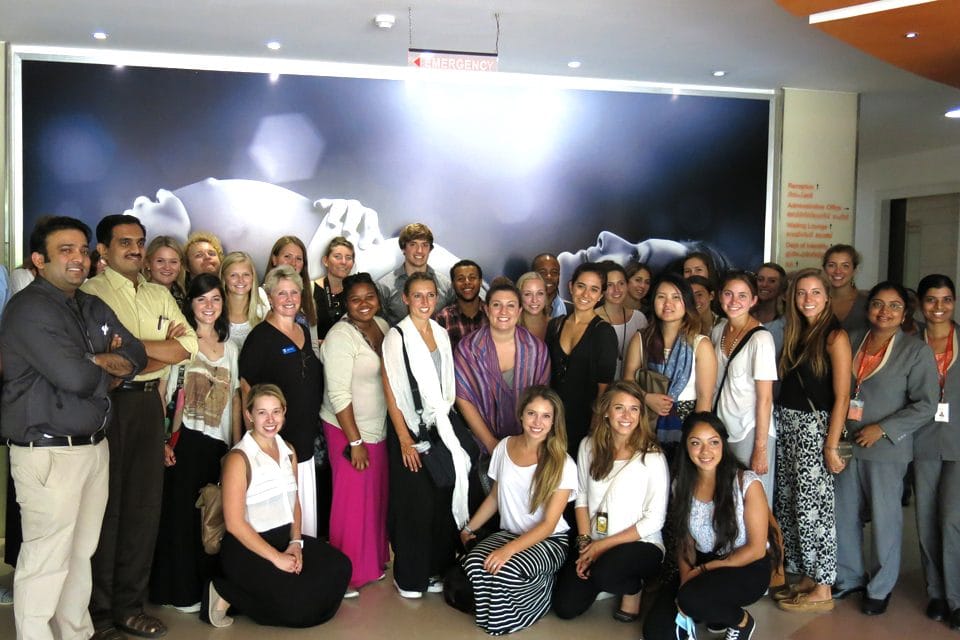 Medical tourism is an increasingly popular way to save money by having procedures performed in other countries where they are remarkably less expensive. In vitro fertilization (IVF) ‚Äì the process by which an egg is removed from a woman, joined with a sperm cell from a man in a test tube, and transferred to a mother’s uterus with the intention of establishing a successful pregnancy ‚Äì is one type of medical tourism that Andrea Parrot’s Human Sexuality class studied on a recent field lab in India. The class visited a clinic to consider the ethical, medical, economic, social, emotional, and legal implications of IVF in India.
Medical tourism is an increasingly popular way to save money by having procedures performed in other countries where they are remarkably less expensive. In vitro fertilization (IVF) ‚Äì the process by which an egg is removed from a woman, joined with a sperm cell from a man in a test tube, and transferred to a mother’s uterus with the intention of establishing a successful pregnancy ‚Äì is one type of medical tourism that Andrea Parrot’s Human Sexuality class studied on a recent field lab in India. The class visited a clinic to consider the ethical, medical, economic, social, emotional, and legal implications of IVF in India.
The Centre for Infertility Management & Assisted Reproduction (CIMAR), whose tagline is “Delivering Happiness,” has been operating in the state of Kerala since 1996. A lot of CIMAR’s work involves IVF for international clientele such as Europeans, Americans and Saudi Arabians. For a fee that is a fourth of what it would be in the US, men and women can use an Indian surrogate to carry and give birth to their baby at CIMAR by means of IVF.
Students had questions prepared and the Consultant & Scientific Director, Dr. Parasuram Gopinath, stood for roughly 30 minutes and answered them all.
What nationality is the baby when it is born?
For example, if a baby is born in India, by an Indian woman, but the biological make-up of that child is from two American parents, what does it state on the birth certificate? Are they Indian or American?
With cooperating countries (such as America), the babies will be born the nationality of the parents. If the parents come from a country that do not recognize this type of procedure (France for example), then the baby would be Indian.
How are surrogates chosen and treated?
Although CIMAR is located in the state of Kerala, the majority of the surrogates are recruited from the poorer, less educated regions of the north. To be eligible, these women must be healthy, at least 22 but not older than 25, and have given birth to at least one child already but not more than five.
According to Gopinath, their time with CIMAR is normally “better than the life they had before.” They are given a home in a special unit for other surrogates, fed a stable and healthy diet, kept away from drugs, alcohol and other potentially harmful influences, monitored by doctors and are eligible to take classes such as yoga.
Can a gay couple adopt?
Between a landmark ruling in India that decriminalized homosexuality in 2009 to the overturning of that decision in 2012, gay couples could use IVF through CIMAR. The Indian government has changed its laws and it is now illegal once again.
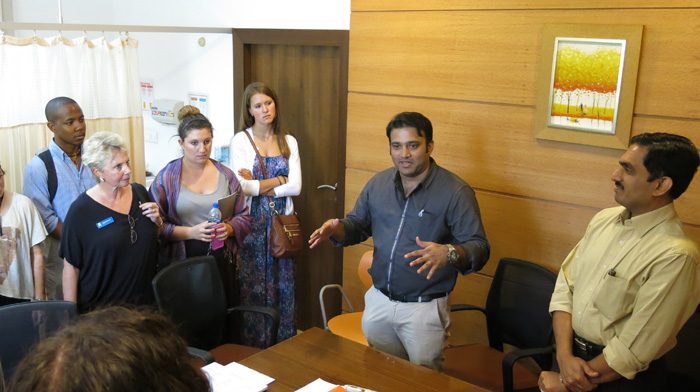
Professor Andrea Parrot, whose research interests include women’s health issues, sexual assault, infertility, and cross cultural women’s health, has sailed as a faculty member on four previous Semester at Sea voyages and has successfully refined her curriculum to take advantage of the unique learning opportunities presented by the floating university. She has taken her classes to an IVF clinic before because, according to her, “it provides very new information and insights to enrich their understanding of the course material.” As Parrot described her teaching approach aboard the ship:
I ultimately hope that [my students] become more educated, aware, open minded, and less judgmental.
For Kevin Johnson of Youngstown State University, the class itself, and not just the field lab, has been an eye-opening experience for him. “I have been surprised by such a vast difference of cultures views on sexualities,” he said. In particular, he has been surprised by the changing definition of beauty in each port SAS has visited. “The Pudong people from Burma,” he said, “find long necks extended using rings as attractive, and in the United States we would view that as cruelty towards women.”
• • •
Veteran professors with a lifetime of experience, such as Parrot, are a cornerstone of Semester at Sea voyages. The very nature of the program provides participants with a once-in-a-lifetime and rare educational experience, but to be under the guidance of such seasoned travelers and educators boosts the value even more and allows students to explore the world through a multi-cultural and interdisciplinary lens. Although the time at CIMAR was, on the surface, spent studying only one topic, the day revealed much more about the world and impregnated (pardon the pun) Parrot’s classwork with a whole new perspective.
